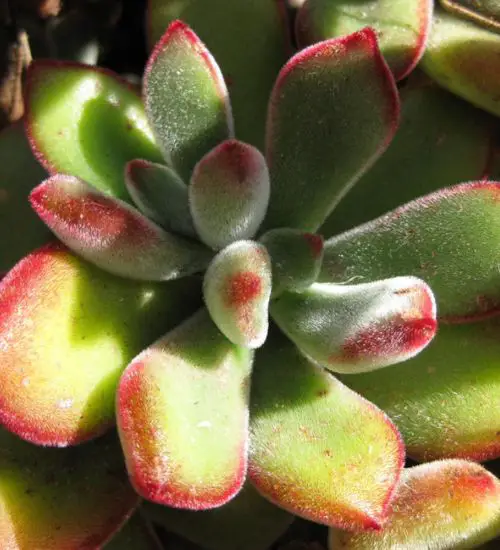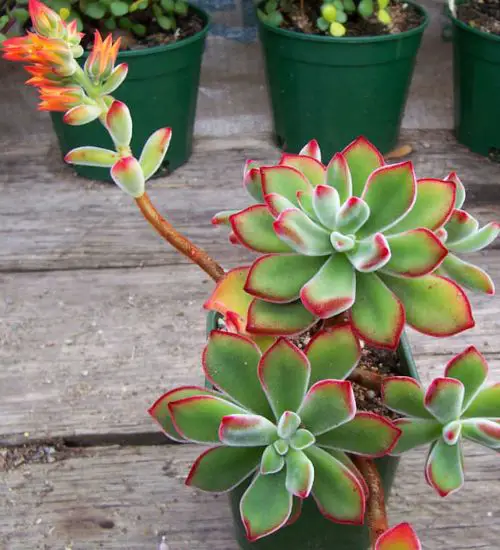Sun: full sun to partial shade
Water: Typical water needs for a succulent
Temperature: Zone 9a from 20° F to 25° F (-6.7 ° C to -3.9° C)
Winter Survival: Not cold hardy
Propagation: leaves, stem cuttings
Flower: In the Spring
Flower Type:
Toxic: Generally non-toxic to humans and animals
Dormant: winter
Space Requirement: Indoors & Outdoors
Common Problems: Plants may rot if overwatered, pests
Where to buy Echeveria pulvinata?
Basc Care for Echeveria pulvinata
Watering
Can you water your succulent more than what its need? The answer is yes and no. In extreme conditions, you can water your plants more often when you notice the soil is completely dry.
One simple tip for you is that you can use some online apps to check the soil status before you go water your succulents. I would recommend the ThePlantsCheck app, it has some nice features there.
Fertilizing
Only feed this succulent during its active growing seasons which means spring, fall, and winter. Use the right fertilizer applied in the right amounts. Applying half-strength balanced fertilizer every month or so is recommended for optimal results.
Do not fertilize during winter as the plant is dormant.
Sun & Location Requirements for "Chenille Plant"
Echeveria pulvinata does best when placed in an area that receives full sun to partial shade throughout the day. This variety of succulents can tolerate direct sunlight for short periods, but if the temperatures get too high or the light is too intense it may be beneficial to find a shadier spot.
Echeveria pulvinata is not cold hardy and does not survive in freezing conditions. However, there are certain strategies that can be used to help the plant thrive despite the chill of winter. Proper drainage and insulation are essential for succulent X during periods of extreme cold. Placing a layer of mulch or gravel on the soil around the plant can also help keep it warm.
Any succulents in the group will need a medium space to grow. You can place your pot at your table or window. Since this plant needs more space than mini succulents, you should consider do not plant them together with other succulents/plants.
Echeveria pulvinata also benefits from some indirect light throughout the day as well, so make sure you give it enough space to soak up light without becoming too exposed to heat.
Propagation
Propagating succulents by leaves is a great way to grow new plants from existing ones. Simply cut off a few healthy leaves from the mother plant and place them on top of a potting mix. Water the soil regularly, keeping it moist but not soggy, and soon you'll have brand new succulents!
Propagating Echeveria pulvinata by stem cuttings is a simple process that requires very few supplies. Start by selecting healthy stems from existing plants that are at least two inches long and have several leaves attached.
Toxicity

Echeveria pulvinata is generally non-toxic to humans and animals. However, it is important to be aware that certain parts of the plant may contain toxins which can cause mild skin irritation. It is advised that you keep the plants away from small children or pets, as they may unknowingly ingest them and suffer ill effects.
Pests and Diseases
Echeveria pulvinata can be affected common pests and diseases like most of the other succulents such as mealybugs.
If you do spot any of pest signs, you can treat your succulent using below methods.
- Mealybugs: quarantine, clean infected plants, soapy water.
Besides that, to prevent serious health issues from happening, keep your succulent in a well-ventilated area and check it regularly for any signs of pests or health problems.


